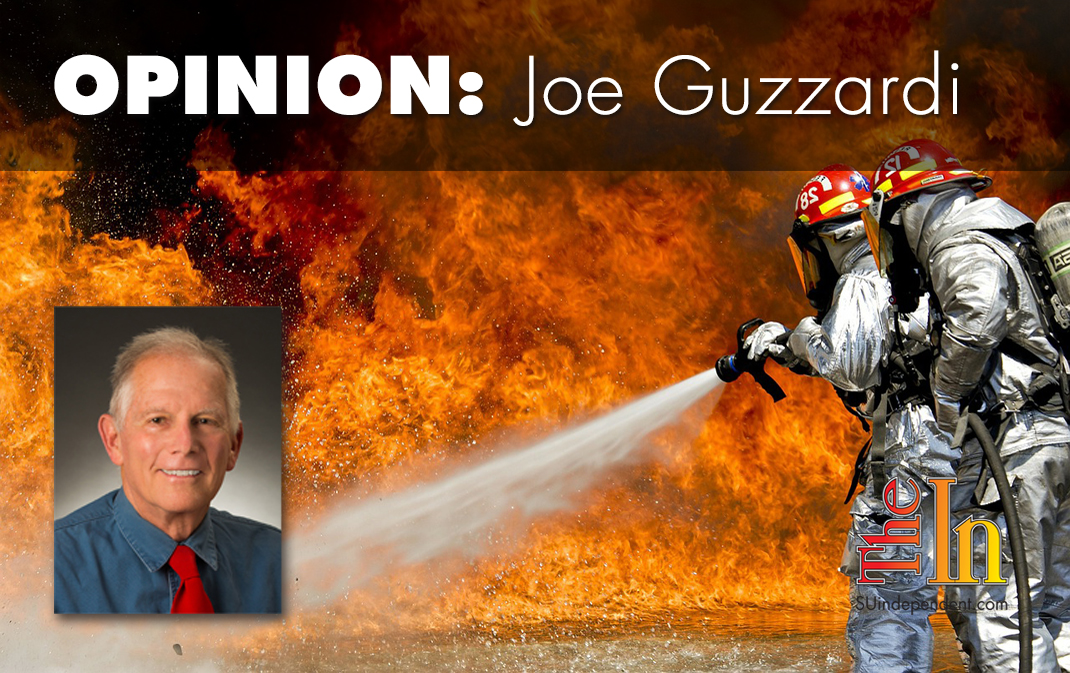
California’s leaders didn’t learn from past deadly wildfires
For California natives like me, the wildfires are a real gut punch. As of this writing, the wildfires are the deadliest in the state’s history with at least 58 fatalities and hundreds unaccounted for. More than 10,000 buildings are gone, and more than 230,000 acres have burned.
In the now obliterated community of Paradise, several fleeing locals couldn’t outrun the flames and burned to death in their cars. As one survivor said, the scene was “exactly like any apocalyptic movie” she had ever seen. The fires have been devastating for 10,000 horses, house pets, and wildlife. Los Angeles County Animal Care & Control said about 700 animals, including 550 horses, nine cows and at least one tortoise, are now in the agency’s care.
Thousand Oaks, which just suffered a mass shooting and 12 deaths, is coping with the Camp Fire, which was 35 percent contained as of Nov. 14. It has moved south, nearing other outlying Los Angeles suburbs. Cal Fire Chief Ken Pimlott ominously predicted the week could bring more ruin to Southern California, particularly San Diego, Riverside, and San Bernardino counties.
The California that I grew up in during the 1950s is gone forever, replaced by an overcrowded, sprawling state that makes expeditious wildfire control nearly impossible. I left in 2008 when I could no longer abide California’s paralyzing traffic, relentless development, and the never-ending urban sprawl. California was unrecognizable to me.
Lessons that California’s leaders should have learned from past fatal wildfires haven’t sunk in. Wildfires are difficult to control, but slower growth could minimize destruction.
California’s exploding population has created an insatiable housing demand. The state which had roughly a 10 million population when I was a youth is now home to nearly 40 million residents, and demographers anticipate 50 million by 2050.
The new populace spawned what’s called “Wild-Land Urban Interface” or inter-mix — low-density housing built on hillsides amidst highly flammable vegetation. Last year, Cal Fire Battalion Chief Jonathan Cox called increasingly popular inter-mix construction a “recipe for disaster.”
Cox explained that areas in California that 20 years ago would have been undeveloped are today inter-mix communities. The vast inter-mix square acreage plus the frequency and intensity of fires turn homes into tinderboxes and make access for rescue crews difficult.
Fire codes require inter-mix housing have fire-resistant roofs, noncombustible siding, and 100 feet of clearance between vegetation and structures. Still, Cox said, fighting tactics for vegetation fires and for structure fires are fundamentally different. The challenge becomes greater when fires are on slopes and hills.
California’s leaders — outgoing Jerry Brown, Governor-Elect Gavin Newsom, and Senators Dianne Feinstein and Kamala Harris — remain 100 percent committed to more growth and to more building to accommodate that growth.
Last year, Brown signed 15 bills that will accelerate development. While the legislation is designed to ease the affordable housing shortage and not necessarily written for inter-mix construction, some of the bills eliminate public hearings and environmental impact studies. Wherever open spaces can be found, Sacramento wants to see building. During his campaign, Newsom advocated for more housing development, the last thing California needs.
California life has become so untenable for so many that moving out will be an increasingly attractive option — one way that California’s population could finally stabilize.
The viewpoints expressed above are those of the author and do not necessarily reflect those of The Independent.
How to submit an article, guest opinion piece, or letter to the editor to The Independent
Do you have something to say? Want your voice to be heard by thousands of readers? Send The Independent your letter to the editor or guest opinion piece. All submissions will be considered for publication by our editorial staff. If your letter or editorial is accepted, it will run on suindependent.com, and we’ll promote it through all of our social media channels. We may even decide to include it in our monthly print edition. Just follow our simple submission guidelines and make your voice heard:
—Submissions should be between 300 and 1,500 words.
—Submissions must be sent to editor@infowest.com as a .doc, .docx, .txt, or .rtf file.
—The subject line of the email containing your submission should read “Letter to the editor.”
—Attach your name to both the email and the document file (we don’t run anonymous letters).
—If you have a photo or image you’d like us to use and it’s in .jpg format, at least 1200 X 754 pixels large, and your intellectual property (you own the copyright), feel free to attach it as well, though we reserve the right to choose a different image.
—If you are on Twitter and would like a shout-out when your piece or letter is published, include that in your correspondence and we’ll give you a mention at the time of publication.
Articles related to “California’s leaders didn’t learn from past deadly wildfires”
Don’t get scammed by predatory businesses: BBB tips for after a fire



